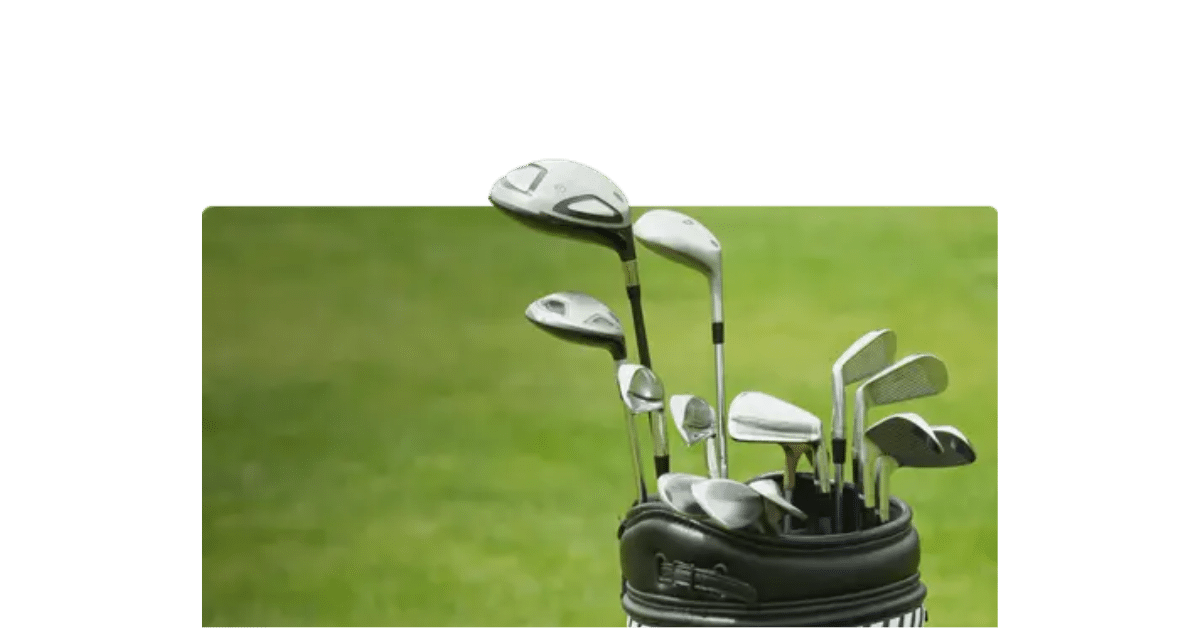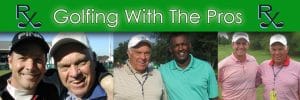
I literally got into the PGA by accident. It was 2002 and I fell on ice and hit my left shoulder on the fender of my car and dislocated. This required surgery and left arm in sling for weeks. I was in California for the winter and planned on golfing, but now limited to right hand putting.
I took it serious for something to do and studied putting. I went to PGA show in Orlando and saw a ultrasound machine that would measure the putter head motion in 28 dimensions. I thought the product was great, but also thought a one product company would go bankrupt, so I bought 5 units. I went out on tour and players lined up to see their putting profile. As result I became friends with Camilo Villegas who put on my grips and became a 4 time winner on PGA tour.
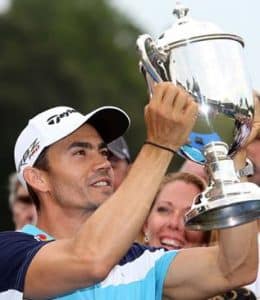
Camilo Villegas
I was introduced to Howard Twitty, a senior PGA player, 3 time winner on the regular tour. I got commercial credentials to attend tournaments and show my product to players. I was first one out on tour with this putting technology, so players lined up to see their putting profile. I then realized I was collecting data on eventually 100 plus tour players. This lead to learning enough from the testing to get Instructor Credentials on the tour. I was teaching what I learned from other and applying surgical technique principles of palpation, proprioception and spacial relationships.
This lead eventually to writing a 400 plus page book, chronicling my experience, called There is more to putting than meets the eye. Howard Twitty was the co-author.
 .
. 
Knowing from my surgical practice on Hall of Fame football players, I knew they did not like their “territory” invaded. So I went out on tour with this mantra, “I do not charge and I do not pay”. I never approached a player without an introduction. I initially had Howard’s and then, Lee Janzen who I knew from before. Langer, who is German responded to my mantra saying, “I like you do not charge”, with a smile.

Langer, Singh and Jerry Pate
The other funny one was in 2008 Vijay Singh was putting bad and missed the cut at US Open at Oakland Hills. I worked with him for 2 hours. He was appreciative and pulled out his wallet and offered to pay. I told him the young players say that Dr. Lanny only charges if he thinks your net worth is greater than his. I then said jokingly, Vijay you probably qualify. I refused his offer. He went on and won twice plus the FedEx cup that was worth 10 million at the time.

ViJay Singh
My goal was penetration with the tour players and selling my patents to a major company. I got the penetration. I made hundreds of thousands for the likes of Bob Tway, Tom Lehman, Bernard Langer.
I introduced my putting teaching, novel golf grip and glove with evidence of performance. However, since I did not pay, few players used the products. Two players without a big name or money winnings went on to win the British Senior Open having only put my proprioception enhancing grip of their clubs. Mark Wiebe won in 2013 and Marco Dawson in 2015.
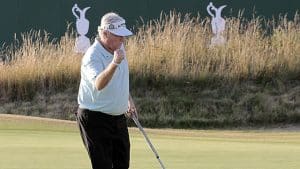
Marc Wiebe, British Senior Open Champion
Marco who had never won on regular tour went on to be multiple winner on the Champions Tour. He started winning millions of dollars, never before realized. 
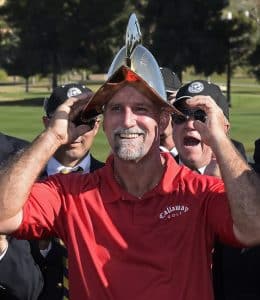
Marco Dawson British Senior Open Champion and winner at Tuscon.
I had data on 100 plus players showing they could hit the ball more in the face of a driver they had never swung before compared to their perfectly fitted club. I recorded where they hit their ball on the club face. Only one pro hit consistently in the middle of the club face. I then handed them a driver not fit for them, weak shaft and length but with my grooved grip. With no practice swings every player showed improvement in the impact pattern on the face of that driver. Tom Kite expressed what most players were thinking when he said, “Where is the magic bracelet, Lanny? They of course had no understanding of the medical terms of 2-point discrimination or proprioception.
I met with every major golf company president with my products and supporting evidence and still not interest. The main problem with any industry is the NIH, or not invented here. They saw the evidence but no interest. The golf industry is built on marketing, even up to 35% of net income. They sell the head of the driver and not the grip. The grip is a commodity to them and the cheaper the better. The golf industry has convinced the pubic that the club hits the ball 10 yards further every year. If so, how far would the ball go in 10 years; not. The shaft has gained some attention in recent years. I finally learned I was trying to overcome superstition with evidence.
The final blow to this venture was when the IRS fined me $180,000 saying I was not really working, but just having fun with a hobby. I paid and since no longer could deduct my expenses I went back to my day job, orthopedic and medical research.
My favorite golf story. Jay Haas came up to me on the putting green and asked if he could have his pitcher taken with me. I was surprised as it is usually the other way around. A citizen asks the pro for a picture. I inquired why? Jay said he saw his orthopedic surgeon the week before and asked him he knew of me since he had lunch with me just 3 weeks before. The doctor said you must be mistaken Jay, Lanny is so old he is dead. You likely had lunch with his son. So me being alive and well, Jay wanted to send the doctor our photograph to prove Jay was right.

Jay Haas and myself
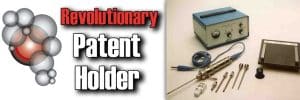
see legacy www.prescriptiongolf.com
